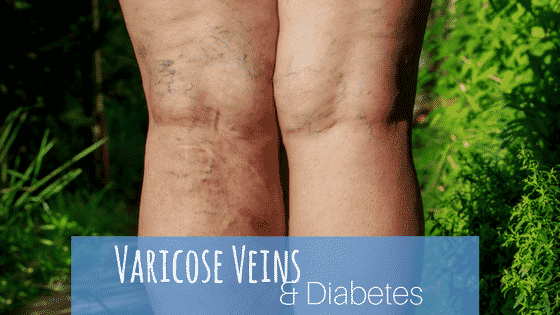
Though there is no direct link between varicose veins and diabetes, many people suffer from both conditions simultaneously. Diabetes can cause a wide range of health problems, including skin conditions, as do varicose veins. [Read more…]
FREE Vein Screening
Call (816) 533-4398

Though there is no direct link between varicose veins and diabetes, many people suffer from both conditions simultaneously. Diabetes can cause a wide range of health problems, including skin conditions, as do varicose veins. [Read more…]
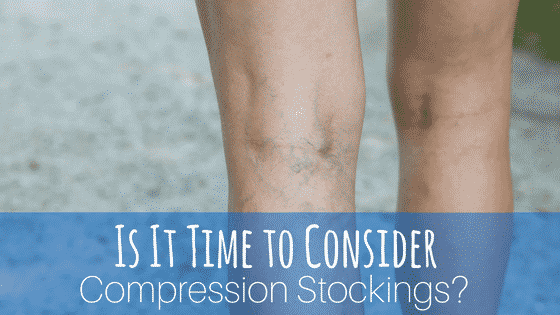
Spider and varicose veins might just be unsightly nuisances to you, but they are actually the visual alerts to a bigger problem like chronic venous insufficiency. This is a disease that basically prevents blood from flowing back up the leg, leaving blood to pool and veins to bulge. [Read more…]
Summit Skin & Vein Care is hosting a free vein screening open house! Join us for useful vein and skin care information, a complimentary Swag Box, and the chance to win a door prize.
Our event will be held Tuesday, September 29th from 6 p.m. to 7 p.m. at 3521 NE Ralph Powell Road, Suite C, Lee’s Summit, Missouri. E-mail your RSVP to Christy at m31288@att.net by Friday, September 25th.
The goal of our open house is to help you learn more about your vein and leg health. If you have experienced various symptoms related to vein disease, come in for a free vein screening from our professionals. Some symptoms of vein disease include:
If you have experienced any of the above symptoms, or have noticed the appearance of spider or varicose veins on your legs, we recommend getting a vein screening to learn more about your vein health. There are six stages of vein disease. If left untreated, your vein problems could progress to stages five or six.
Stage 1 – Spider Veins. Spider veins are small thin blood vessels close to the surface of the skin and typically have a dark, spindly appearance. Spider veins are more common in women than in men.
Stage 2 – Varicose Veins. Varicose veins have a protruding, rope-like appearance. About 75% of people with varicose veins have symptoms bad enough to interfere with their daily lives. Common symptoms include burning, numbness, itchiness, aching, and swelling in the legs.
Stage 3 – Edema. Swelling of the legs, known as edema, occurs as vein diseases progress without treatment. Backflow of the veins prevents the body from absorbing fluid, which leads to this uncomfortable swelling.
Stage 4 – Skin Discoloration. Venous congestion increases as vein disease progresses. This leads to discoloration in the skin to a reddish-brown or white color.
Stage 5 – Skin Changes with Healed Ulceration. An ulceration often develops with vein disease. With stage 5, an ulceration is not too difficult to treat, but will require treatment to provide relief from uncomfortable symptoms.
Stage 6 – Skin Changes with Active Ulceration. Venous ulcers occur in this stage because of malfunctioning venous valves. Venous ulcers can become chronic, painful problems if you do not get treatment. Symptoms at this point will only continue to worsen.
We want to help you achieve better vein health. Join us for snacks, gifts, & information about varicose veins. E-mail your RSVP to Christy at m31288@att.net by Friday, September 25th
Sometimes varicose and/or spider veins cannot be prevented due to genetic predispositions to weak vein walls, but there are certain tips to keep in mind in order to delay their appearance or reduce the risk of onset.
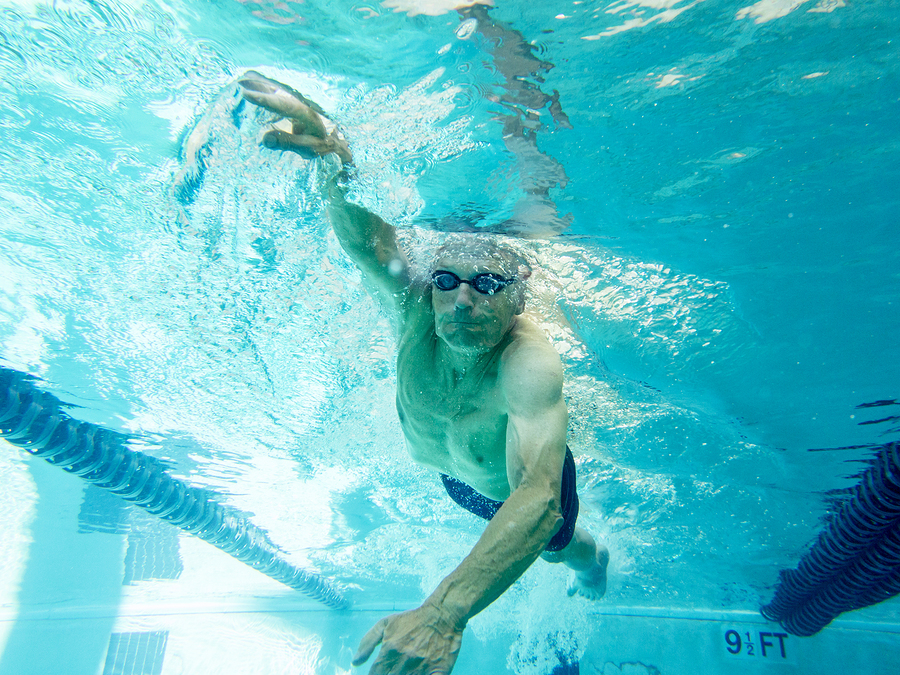 1.) Regular exercise
1.) Regular exercise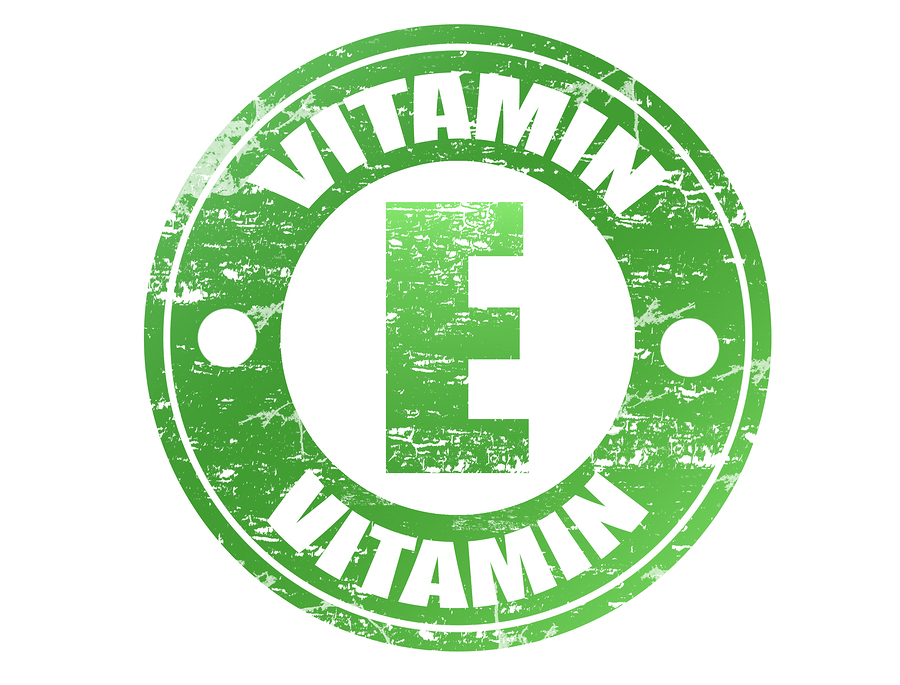 4.) Modify your diet
4.) Modify your dietCut back on salt. Salt can cause increased swelling, which leads to varicose veins. Taking vitamin supplements, such as Vitamin E, are thought to promote skin andvein health. Consult with your doctor before adding nutritional supplements into your diet.
Although the major, holiday-induced travel season has come and gone, deep vein thrombosis remains a big issue for select individuals. Flying or traveling by train or car in cramped, uncomfortable conditions can result in more than a neck ache for some travelers. “Economy class syndrome” is a term that has been coined to describe deep vein thrombosis, a serious health complication that arises from long, stagnant periods of inactivity in crowded seating areas. Although some people have health conditions that predispose them to developing this condition, there are some preventative measures that can be taken to avoid deep vein thrombosis. Allow the experts at Summit Skin & Vein Care of Lee’s Summit, Missouri, to explain these precautions in detail.
Lengthy periods of stagnation can cause leg discomfort and, worse, deep vein thrombosis. The restriction of healthy blood flow can cause a deep-vein blood clot. Deep-vein blood clots can become a potentially fatal issue if it is dislodged into the lungs upon the return to normal blood circulation. When this happens, a pulmonary embolism can occur, which sometimes causes death. While health conditions like pregnancy, obesity, and heart disease can increase a person’s risk for the development of deep vein thrombosis, this condition knows no limits. In the right circumstances, even the healthiest of individuals can fall victim to deep vein thrombosis.
Staying fully hydrated is key to your comfort and safety while traveling. Dehydration can cause your blood to thicken, making you more susceptible to the development of serious blood clots like deep vein thrombosis. As a rule of thumb, avoid alcoholic beverages and drink lots of water as your travel.

Crossed legs restrict your blood flow, whereas uncrossed legs enable the free flow of blood throughout your circulatory system. When your legs are confined, keep them flat to help promote good blood flow.
Even the most cramped conditions usually have space for you to flex your feet up and down while you are seated. This activity helps move your calves, prompting healthy blood flow throughout your body. In addition, taking a stroll down the aisle every so often is another way to restore normal blood flow.
The stretching of veins during prolonged periods of inactivity throughout travel are another factor that increase your chances of blood clots like deep vein thrombosis. The solution? Wearing graduated compression stockings can help prevent idle, leg-induced vein stretching that sometimes causes deep vein thrombosis.
Before you travel again, be sure to think about ways you can proactively protect yourself from deep vein thrombosis. This condition is serious and it should be avoided at all costs. Need assistance? Summit Skin & Vein Care of Lee’s Summit, Missouri, is here to help.
Suffering from deep vein thrombosis or another vein-related health condition?
Contact Summit Skin & Vein Care of Lee’s Summit, Missouri, to learn about our vein quick scan and other services by calling (816) 533-4398.
 Vein disease is a common and treatable health issue. However, the key to successful treatment is knowing the stages so you can identify and treat them accordingly. At Summit Skin & Vein Care of Lee’s Summit, Missouri, we are vein disease experts who are here to help you learn about the common symptoms of this health issue. Education is a powerful tool, so be sure to learn about vein disease today.
Vein disease is a common and treatable health issue. However, the key to successful treatment is knowing the stages so you can identify and treat them accordingly. At Summit Skin & Vein Care of Lee’s Summit, Missouri, we are vein disease experts who are here to help you learn about the common symptoms of this health issue. Education is a powerful tool, so be sure to learn about vein disease today.
The earliest stage of vein disease begins with the development of spider veins. Just as the name suggests, spider veins create a spidery appearance in your legs. The cause for this is dialated skin capillaries. Typically, this causes more cosmetic problems than health problems; however, it can sometimes create pain.
The next stage of vein disease is the development of varicose veins. These veins have a telltale ropey appearance and are caused by stretched-out valves, which results in the two-way flow of blood. Left ignored, varicose veins can damage surrounding, otherwise healthy veins, causing discoloration of skin and the development of ulcers.
As mentioned, untreated varicose veins can evolve into other health problems, such as edema. This can create some discomfort. Although, at this point, there are usually no visible skin changes. If you are experiencing excessive swelling, be sure to contact a professional who can help treat any discomfort you may be experiencing.
As varicose veins progress, skin discoloration is the next phase of vein disease. Here, tan or bronze-like discoloration usually develops in the lower legs.
As vein disease progresses, it is not uncommon for you to see some skin changes. The development of healed ulceration is normal. Unsure what this looks like? All this means is that an ulcer is covered by epithelial regeneration like scarring.
The next and final stage of vein disease is active ulceration. At this point, the ulcer is usually visible — and subject to appear in a number of forms — and may be causing you some discomfort. If you are experiencing pain, be certain to visit a specialist and learn about the treatment of vein disease.
If you are in the early or late stages of vein disease, there is help. At Summit Skin & Vein Care of Lee’s Summit, Missouri, we provide a number of treatments that target various stages of vein disease. Also, do not miss out on our free vein screening, which enables us to analyze the current health of your veins.
For information about our vein disease treatment services, call Summit Skin & Vein Care of Lee’s Summit, MO, at (816) 533-4398.
Summit Skin & Vein Care is proudly serving Lee’s Summit, Raytown, Independence, Blue Springs, Harrisonville, Warrensburg, Clinton, MO, and their surrounding areas.
If you are one of the millions of people who suffers from varicose veins or spider veins, chances are you have heard you do not have to treat your conditions unless they are bothering you. You might not like how your spider veins make your legs look, or you might suffer from chronic leg pain, swelling, cramping, or heaviness as a result of varicose veins. If so, you may choose to pursue a varicose or spider vein treatment such as sclerotherapy. If not, you may let your vein issues go untreated.
As we discussed in our last post on chronic venous insufficiency, varicose veins and spider veins can lead to more serious circulatory complications in the legs. Thus, even if your spider veins or varicose veins are not currently causing you cosmetic embarrassment or physical discomfort, we recommend that you have them examined and treated before they contribute to larger vein issues.
At Summit Skin & Vein Care, we offer a number of treatment options for varicose and spider veins, including sclerotherapy. But what exactly does sclerotherapy entail?
Literally translated as “hard therapy,” sclerotherapy is a process used to treat varicose and spider veins. During the procedure, the vein specialist will use a tiny needle to inject a medication into your vein. The medication, called a sclerosant, is designed to irritate and harden the vein lining, which causes the veins to break down and disappear.
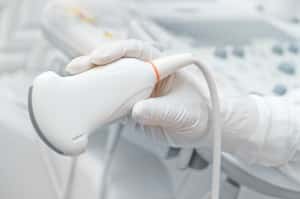
In ultrasound-guided sclerotherapy, a medical professional monitors the vein being treated on an ultrasound screen, allowing treatment of veins that are deeper and would otherwise need surgical removal.
After your sclerotherapy session, you will need to wear a compression stocking for seven days. You should walk frequently, as this will make your legs feel better, and you will be able to return to work immediately.
You can receive sclerotherapy treatment for your varicose or spider veins from a phlebology expert like Summit Skin & Vein Care.
Contact us at (816) 533-4398 today for more information or to schedule an appointment!
If you’re diagnosed with a vein disease, such as spider veins, varicose veins, deep vein thrombosis, or chronic venous insufficiency, one of your first questions might be what causes vein disease, or how might I have prevented this?
There are several causes for vein disease, or risk factors that increase your chances of developing a vein disease. Although some causes are factors we can’t change, like gender, age, or ethnicity, others are lifestyle choices that can be adjusted to decrease the chance of vein disease. Understanding what causes vein disease will help protect you against spider and varicose veins, blood clots, and more.
 Citizens of industrialized nations like the United States are more likely to develop vein disease due to their more sedentary lifestyle. Riding in cars and sitting at a computer are more common in these nations, and since remaining in one position for a long period of time — whether you’re standing, sitting, or lying down — leads to vein disease like varicose and spider veins. The longer you remain in one position, the more likely you are to develop vein disease.
Citizens of industrialized nations like the United States are more likely to develop vein disease due to their more sedentary lifestyle. Riding in cars and sitting at a computer are more common in these nations, and since remaining in one position for a long period of time — whether you’re standing, sitting, or lying down — leads to vein disease like varicose and spider veins. The longer you remain in one position, the more likely you are to develop vein disease.
Another cause of vein disease? Lack of ankle mobility. Your calf muscles work as a pump, pushing blood against gravity from your legs to your heart, and when you move your ankles, your calves pump better. An immobile ankle increases your chances of getting a vein disease.
As you grow older, you increase your chance of getting a vein disease. Smaller issues that began earlier eventually progress into more serious problems. As our bodies lose collagen, our vein walls break down and lose elasticity, causing the walls to stretch and leak. This leads to vein disease like varicose or spider veins.
Although senior citizens do have a 50% greater chance of suffering from venous insufficiency than younger people, they do not have different success rates after venous treatments. Thus, even if you are elderly, treating your vein disease should still work well.
Gene mapping has revealed a genetic component to venous disease, suggesting that vein disease is hereditary. Though more research needs to be done in this area, if someone in your family has varicose or spider veins, you are likely to get them as well. Be aware of your family medical history to know if it might cause vein disease.
Race is another factor that causes vein disease. Studies have shown a higher occurrence of varicose veins in Caucasians than those of Asian, Hispanic, and African American descent.
Gender is another risk factor for vein disease. Women are 2 ½ times more likely to develop varicose or spider veins than men, mostly due to female hormones like progesterone, which cause vein walls to stretch. During pregnancy, women have high progesterone levels that cause vein disease. When the veins are stretched for 9 months during pregnancy, they may never return to their original size.
Although some causes of vein disease obviously can’t be helped — gender, ethnicity, family history, and age, namely — those associated with our lifestyle can be adjusted.
If your job requires you to stay seated or standing in the same position for long periods of time, get up and move. If you are on bed rest, flex your ankles frequently. Ladies, limit your time in high heels, as they inhibit ankle mobility and thus cause vein disease. While pregnant, wear graduated compression stockings to encourage healthy circulation.
If you have any of the above risk factors for vein disease and you live in Kansas City, Summit Skin & Vein Care can help identify and treat your vein disease.
Contact Summit Skin & Vein Care at (816) 533-4398 today for more information or to schedule an appointment!
Have you ever noticed a new or more prominent blood vessel in your leg when getting dressed? If so, you’re probably one of the 1 in 3 women or 1 in 5 men who develop spider veins in their lifetime.
Though they seemingly appear out of nowhere, spider veins are not new blood vessels that our bodies form. Spider veins are created when previously unseen veins near the surface of our skin stretch, letting in more blood and thus becoming visible. As they stretch and become noticeable, spider veins can resemble individual threads or larger vein clusters that look like tree branches. They can be seen on your legs, chest, abdomen, back, arms, and even your face.
What factors in particular lead our existing veins to stretch and morph into spider veins? There are a number of causes behind the development of spider veins. Understanding how spider veins develop can help you identify when you might get them, leading to early detection and treatment.
It is important that you know your family medical history so you know if you are prone to developing spider veins. If your immediate family has experienced spider veins in the past, you are also more likely to deal with them. Obviously your family medical history is not something you can control, but if you know that 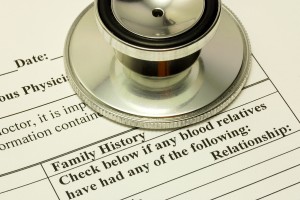 your mother and grandfather both had networks of spider veins, you can predict that you might also develop them, and thus stay on the lookout for your own spider vein clusters.
your mother and grandfather both had networks of spider veins, you can predict that you might also develop them, and thus stay on the lookout for your own spider vein clusters.
If you hurt your soft tissues — like when you are struck by a hard object, or even hurt as the result of a surgery — spider veins may develop in the injured area. For example, if a soccer ball strikes your calf during a game, the injury might cause blood vessels to stretch and transform into spider veins. Take caution during physical activity to avoid creating spider veins.
Estrogen and progesterone, two female hormones, can spur the creation of spider veins. Thus, if you take prescription drugs that contain these hormones, such as birth control pills, hormone replacement therapies, and infertility medications, they can cause spider veins to form in your body.
When a woman becomes pregnant, her progesterone levels rise, and they remain high during and after pregnancy. Since progesterone relaxes veins’ muscle walls, leading to stretching and blood intake, pregnant women often notice large quantities of new spider veins while they’re with child.
Remaining in a fixed position for a long time can cause your vein walls to weaken and become spider veins. So, if you have a job that requires you to stand or sit for prolonged periods of time, you are more prone to developing spider veins. To mitigate the effects, be sure to get up and walk around when possible during the work day.
Spider veins can merely be a cosmetic issue, or they can indicate that you are suffering from a more serious medical condition that can only be detected with an ultrasound. Discomfort like aches, burning, and throbbing sensations, heaviness, or excessive itchiness can result from spider veins, especially those on the back of the knees; it’s important to get your spider veins treated to avoid any unnecessary pain!
Summit Skin & Vein Care offers a variety treatments for spider veins including Sclerotherapy and Laser Vein Therapy. We’ll conduct a free vein screening before your physical examination to more accurately assess the extent of your spider veins, as well as to create the best treatment plan. Contact Summit Skin & Vein at (816) 533-4398 today for more information on spider veins or to schedule an appointment.
Before you have your first vein treatment consultation, it is important that you have an idea of what to expect. Your consultation is a great place for you to get details, but you do not want to go into it blindly. Because of this, we have the details about what you can expect at your vein treatment appointment. Here, you should address the following at your vein treatment consultation: a discussion about your medical history, an examination, and realistic expectations in regard to your results.
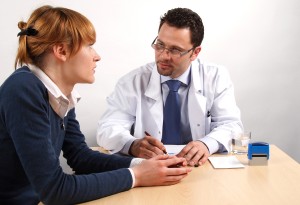 1. Discussion of Medical History
1. Discussion of Medical HistoryIn order for your vein treatment specialists to grasp an understanding of your unique vein treatment needs, a thorough discussion of your medical history needs to be covered. Unfortunately, a number of vein-related issues, such as spider veins and varicose veins, are hereditary and based on your genetic makeup. Factors like your sex, age, and health conditions, such as pregnancy, can affect certain vein conditions. Disclosing this information is crucial to successful vein treatment, so be sure to include all the details.
Vein treatment examinations are not limited to the analysis of your veins. This consultation entails the examination of your arteries, too. Why? It is not unusual for vein and artery changes to occur simultaneously. Throughout your vein treatment consultation, you can expect your physician to take an in-depth approach to the assessment of your veins. For an accurate overview, you can expect to move into a series of standing and sitting positions. Believe it or not, moving from a sitting to standing position can sometimes have a huge impact on the valves of your veins.
After your medical history has been discussed and your vein treatment specialist has completed a thorough vein analysis, it is important that you discuss your vein treatment expectations. Why? It is crucial that you know that while many vein complications can be treated, this does not mean your condition will be cured. If your vein issue is genetic, it’s likely that spider or varicose veins will return over time. Because of this, it is important that patients enter vein treatment with realistic expectations.
Now that you have an idea of what you can expect during your vein treatment consultation, schedule your appointment today. Do you have problem veins that need the attention of vein treatment specialists? Summit Skin & Vein Care of Lee’s Summit, MO, can help.
To learn about our vein treatment services, contact Summit Skin & Vein Care at (816) 533-4398, and do not forget to ask about our free quick vein check.
Summit Skin & Vein Care is proudly serving Lee’s Summit, Raytown, Independence, Blue Springs, Harrisonville, Warrensburg, Clinton, MO, and their surrounding areas.
For Statement Billing:
(816) 554-7770
Schedule Your Procedure:
(816) 744-3157
For Insurance matters:
(816) 554-0572
© Copyright 2024 Summit Skin Care All rights reserved | Privacy Policy